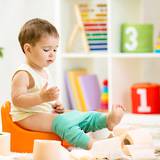Shop
01946
https://www.under5s.co.nz/shop/Hot+Topics+Articles/Health+%26+Wellbeing/Toddlers/Toilet+training+toddlers+without+the+stress.html
Toilet training toddlers without the stress
|
It is typically around the time toilet training begins that toddlers are starting to strive for more independence and beginning to test limits. This can make toilet training a stressful time for everyone involved. So how do we make toilet training a normal part of development?
|
You might also be interested in ...
8 Tips on kids asthma & sleepovers
Sleepovers with friends and family can be lots for fun for young kids. However if they or one of their friends has asthma, it pays to do a little planning up front. A new or unfamiliar environment can pose unforeseen problems that could trigger a child’s asthma, so good communication beforehand is key.
Toilet training tips for toddlers
Everyone's different, but children are usually ready to start toilet training somewhere between 18 months - 3.5 years on average. We take a look at some of the cues for toilet training readiness, managing poo issues and moving through each phase of the toilet training process at your toddler's pace.
join usJoin us on social media for all our latest news. |
sign upSign up and receive our latest newsletters. |
|







This can make toilet training a stressful time for everyone involved.
From age 18 months, it is very much a “me do it” phase and toddlers want things to be done their way and in their time.
This is why if there is too much stress or over emphasis on using the toilet it can very quickly become a ‘battle’.
Find out how to make toilet training a normal part of your toddler's development with these 10 easy tips.
Toilet training toddlers without the stress
1. Look for signs your toddler is ready for toilet training
2. Have routines & toilet training equipment in place
3. Equip your toddler with self-help skills
4. Offer choice & phrase conversations positively
5. Include your toddler as part of the process & planning
6. Make toileting part of your toddler's daily routine
7. Learning through play
8. Bring in some fun
9. Focus on day time dryness first
10. Be consistent & encouraging
Toilet training should be viewed as just another skill for your toddler to learn with your support. Years later it won’t matter if they were using the toilet independently at 2 years, 3 years or later; they will get there.
What will matter is that they feel confident in their own abilities and independence, so take their lead and be positive.
More kids toilet training articles to enjoy:
Source: This article has been written by Creators, a nationwide service offering quality home-based care and education. Creators are passionate about seeing every child’s unique talent being recognized and nurtured.